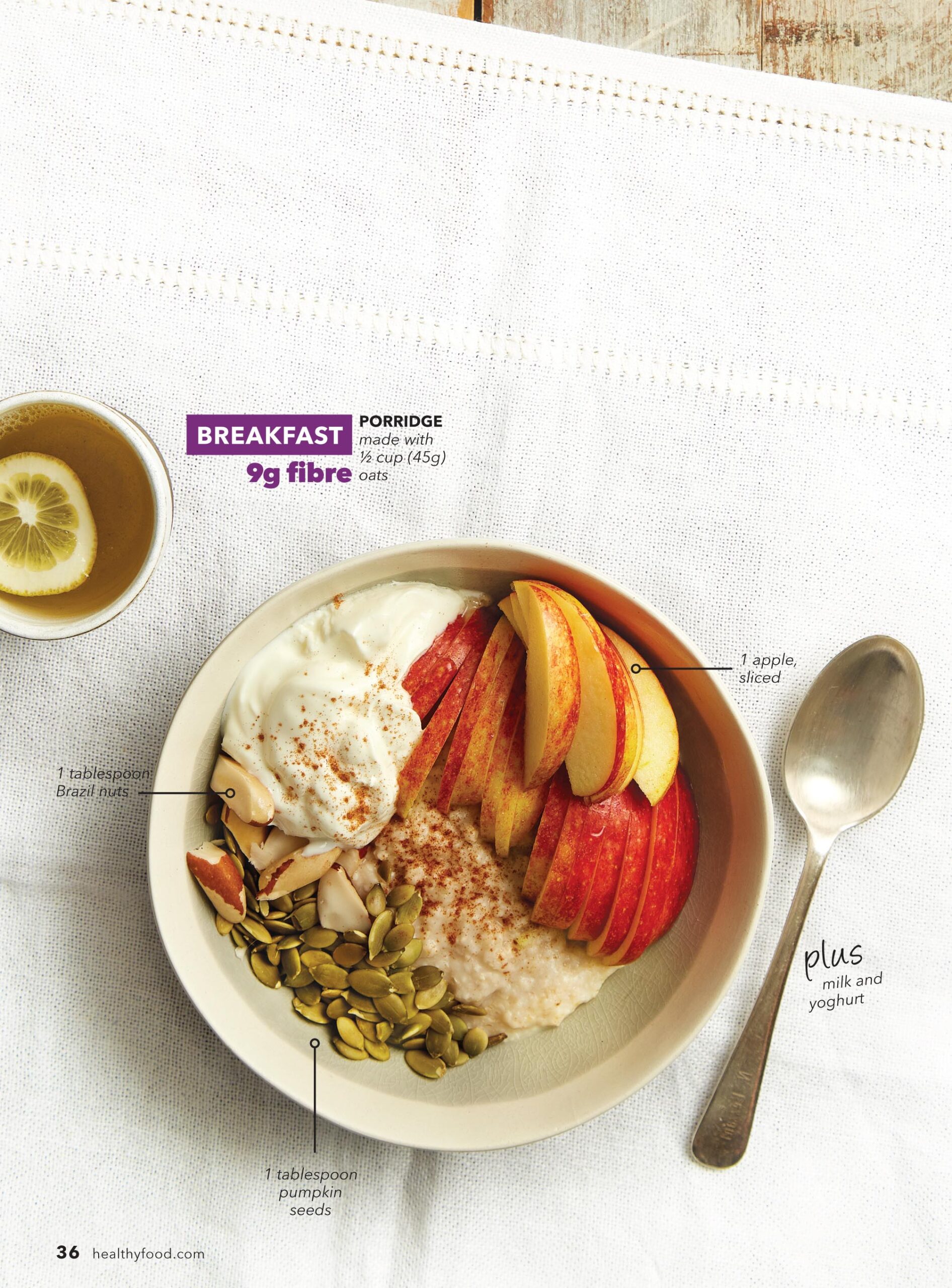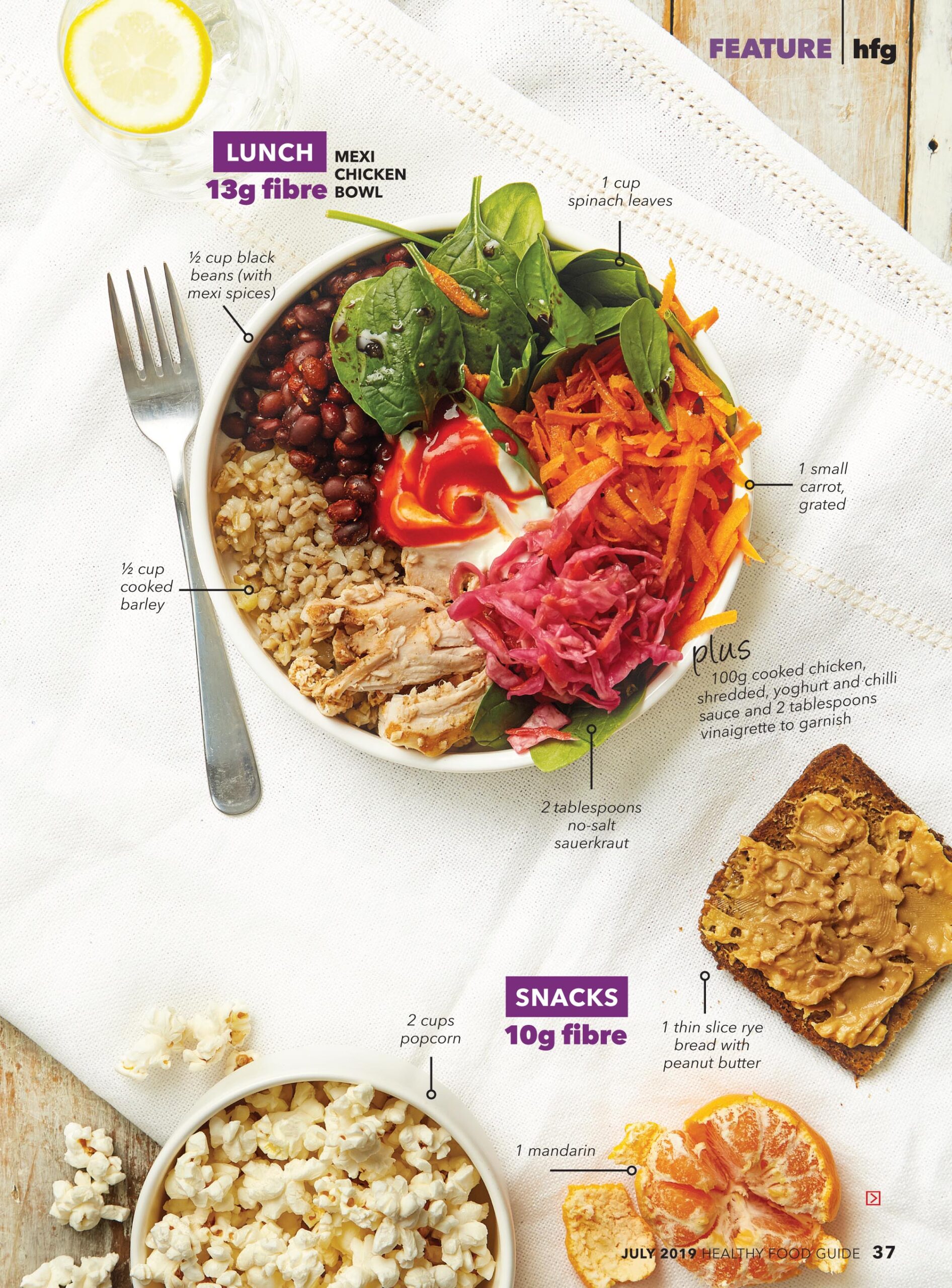
Nutrition experts have known for a long time that dietary fibre is essential for good health. Editor-at-large Niki Bezzant designs a sample daily menu that packs in even more than the 30g fibre target.
Recent research has built on our knowledge of the benefits of fibre. A study led by researchers at Otago University, published in The Lancet, found a link between higher intakes of dietary fibre and wholegrain foods and a reduction in the risk of a wide range of diseases.
The researchers reviewed and analysed over 200 studies and clinical trials conducted over nearly 40 years. They found a 15 to 30 per cent decrease in risk of early death, heart disease, stroke, type 2 diabetes and bowel cancer when comparing the highest dietary fibre consumers with the lowest. High fibre-eaters also had lower body weight, blood pressure and cholesterol.
What does this mean? The researchers suggest 25g-29g of fibre a day is adequate. But 30g is a kind of ‘magic number’ – and the benefits increase, the more we have above that.
Most of us, though, probably get much less than this; the most recent data suggest we average around 20g.
Getting to 30g plus a day of fibre is not difficult, if we pay attention. These meals and snacks provide 41g fibre in one day. Click on the image to get a closer look.
Article sources and references
- Reynolds A et al. 2019. Carbohydrate quality and human health: a series of systematic reviews and meta-analyses. Lancet 393:434-45https://www.ncbi.nlm.nih.gov/pubmed/30638909
www.healthyfood.com













